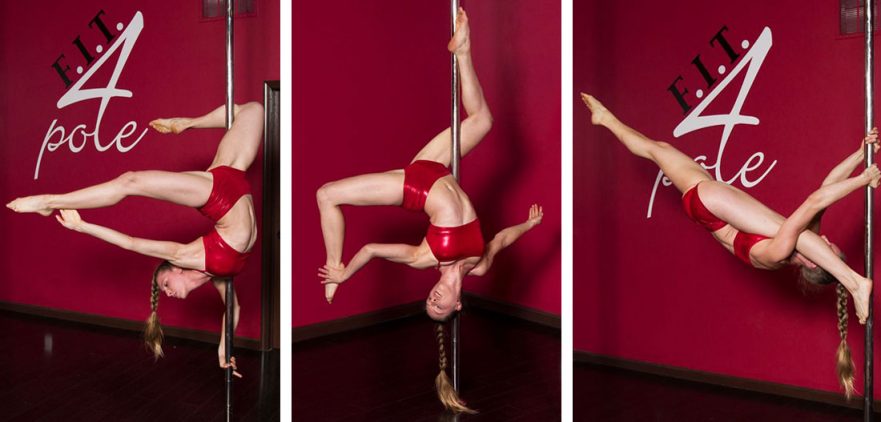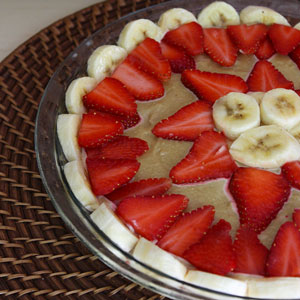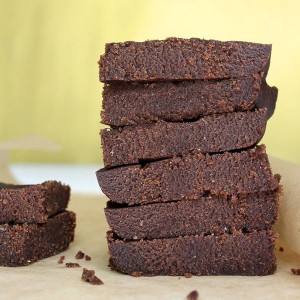If you want to freestyle effortlessly or create a routine with ease, all you have to do is build an organized repertoire of combos. You’ll pick out the shapes and tricks you like, and then string them together with variations and transitions to make a bunch of different combos. Lastly you’ll drill your preferred combos over and over again until they become a habit and feel natural.
Basically, you want a clear idea of what you want to do and what you’re doing.
The key is to repeat your combos with different variations until it becomes a habit, much like how we’re able to drive or walk to a familiar place without really having to think about it, it just comes naturally.
So let’s go through the steps on how to build an organized repertoire of pole combos ready for your disposal. This is what I do to prepare myself for freestyle routines.
1.Organize Your Goals, Inspiration & Progress
A list of recommended platforms for sourcing and organizing inspiration, setting goals, and tracking progress.
“My Pole Catalog” aka Photo & Video Archive
Instagram is my favorite, here’s why:
- Visually see all of your photos & videos, with your chosen thumbnail, on one page.
- Unlimited photo & video storage.
- Easy to upload.
- Corrective lighting filters.
- Trim videos to only the best parts.
- Videos replay over and over again, good for memorization and visualization.
It’s easy to review my progress videos, and look for things that I’d like to change and make mental notes. Or I’ll even comment on the image about the changes I’d like to make.
Watching short 15 second videos on repeat has been my favorite way to train my brain before I try a move or combo on the pole.
Memorization, or practicing with our mind, can be incredibly supportive to our physical training. I watch a clip about 5-10x until I can visualize myself going through the movements smoothly.
Anytime you like a post on Instagram it goes into the “posts you’ve liked” tab in settings, although you can’t organize it, it’s still good for reminders, and Instagram is filled with amazing polers and inspiration.
Joining a pole group like “You Know When You’re a Poler When” will provide you with tons of inspiration from a huge community of polers from around the world!
You can save any post on Facebook and go back to view whenever, however it also lacks organization, and posts tend to get buried.
Pinterest is the ultimate tool for organizing tricks and moves. You could do a basic organization of goals, inspiration, progress; or you could be more in-depth: flexibility tricks, one-handed spins, inverts, combos, etc.
You can upload photos straight from your phone, and you can pin pretty much anything you find on the web.
Youtube
Anytime you watch a youtube video you can save it and view it for later, or you can create playlists and organize you’re favorite videos.
Sometimes I’ll find a really cool trick in the middle of a long performance, when this happens you can comment “That move at 0:37 was amazing.” Youtube should link that time stamp and take you directly to it whenever you need it. Or you could always take a screenshot and add it your platform of choice.
Smartphone/Tablet
I specifically use my phone as a camera for tracking progress and uploading the moves I want to remember onto social media platforms or my computer.
Phone storage is not infinite, especially when you take a lot of video, so by utilizing social media’s storage and organization, you can keep your phone free for your personal memories.
Or if you have a lot of storage…
Create album categories such as; goals, inspiration, and progress. You can screenshot anything you find and add it to those albums.
Wunderlist
Wunderlist is available on all devices and it’s free, it’s basically a super powered to do list. I use it for everything, including pole!
I created a folder named “Goals” and in that folder contains lists. One of my lists is pole, anytime I want to try a pose I write it on my list. With each entry you can add notes, due dates, reminders, comments, add files, photos, and more. Plus you can share lists with your friends, all for free!
Good Ol’ Pen & Paper
I love technology, but sometimes I like to write down my combinations the good ol’ fashion way. I have a pole binder with different sections, one of them is tricks/shapes/transistions with all the things I want to try, and another is combo drills with all the combos written out like this…
[Shoulder Mount -> Chest Stand ->Brass Monkey ->Grab Leg Behind Head, Push Out->???]Below you can make side notes for variations ^both legs Bent
2. Choose Moves & Build Combos
Start with using what you already know and feel comfortable with.
Usually going into practice I’ll have a slight idea of a pose or shape I want to make. So I’ll get warmed up, stretched out, and just feel it out, go where my body takes me and feel confident that I’m going in the right direction. Then I’ll go back on the video and think “oooh I can do this, that, and yeah I should have done that; or wow that was terrible, delete, try again!
a.Pick 3-5 Poses, Shapes, Spins, and/or Tricks
You can add more moves to your combo as you get more comfortable. Each combo can take any amount of time depending on how slow or fast you go, and how many transitions and variations you add.
b.Make Position Variation Notes for Each Pose
I usually make mental notes, drill it and feel it out, then put on Instagram as a visual note, but you could certainly write it down to help you remember.
Some positioning variations to think about:
- Leg Positions: both, right, left; bent, straight; up, down, to the side; knees together, straddle?
- Arm Position: both, right, left; bent, straight; above head, wingspan, down by side?
- Transitions Throughout Trick, Intros & Outros; fast, slow?
Example Combo with Written Notes:
Intro Invert: 2 Climbs, Side Release, Straddle Up
- Inside Leg-Hang
- With a bent free leg and arms by chest;
- Transition: Extend both arms and back leg straight.
- Outro: Swing back leg around, bring knee to knee, swing chest downwards.
- Inverted Crucifix
- With a one leg hang; other leg straight; knee to knee; arms straight out to side.
- Transition: Pull up into Jasmine.
- Variation: Or drop into another inside leg hand, hooked by the ankle.
- Jasmine
- Quick jasmine
- Swing the bottom leg to the other side of the pole back through to inverted crucifix leg hang.
- Quickly keep swinging leg into inside leg hang
- Outside Leg-Hang
- Pop up into an outside leg hang
- With a straight free leg.
- Transition: Immediately swing down into butterfly.
- Butterfly
- Maintain straight free leg.
- Transition: into extended butterfly with both legs straight.
- Reverse previous transition back to outside leg hang.
Outro: Side Dismount
You could go in that order, or you could switch it up, imagine your shapes and how you want it to look and how the transitions affect those shapes.
The more combos you have in your repertoire, the easier it will be to fill out a song with quality content.
I’ll normally go through about 10 different combination and variations before I stumble on my favorites. Then I’ll upload that combo on Instagram to remember for later. Sometimes I find more than one that I like, which gives me an additional combo variation to upload and use for performances.
Here’s another example of one of my drill practice sessions before my Polesgiving Freestyle Performance.
3. Drill, Drill, Drill
- The more you drill, the stronger and more confident you’ll become.
- Over-time your drills will create habitual movement, so make sure they are with good form and intentional movement.
- Always pick the direction of the audience, or lense, and try to aim all of your shapes towards them. The extended butterfly is so pretty but if it’s not facing the audience, it doesn’t show it’s true beauty.
- To check your form and movement, record yourself and review the tape between each song, drill, or set of drills with different variations.
I use a lightweight tripod with a phone holder attachment for almost all my fitness photos and videos.
a. Mind Drills
At least 5x each trick/combo.
- Visualize yourself doing the entire trick or combo, try to get detailed with the transitions.
When it flows easily through your mind, you’ll feel more confident when physically performing the drill. The more habitual you are about drilling and the more confident you become, the more effortless it will look.
If you’re having trouble visualizing yourself doing the move, watch yourself or someone else perform the move on film a few times and try again.
b.Physical Drills
- Drill each move with its intro, throughout, and outro transitions. Forward and Reverse 3-5x.
- Drill in doubles, or triples with all transitions. Forward and Reverse 3-5x.
- Drill the entire combo at least 5x, with pauses in between to make corrections.
- Try to match your movements with music. Feel the music and let different parts of it move you, wether you pick up on the bass-line, melody, or harmony rhythm; try the best you can.
- Always practice with good form , so it becomes habit. Point your toes and feet, and straighten or bend your limbs with intention.
- Start out by going through moves and transitions slowly,this helps you to understand the major differences minute variations can have on your shapes and rotations.
Make sure you film your drill and put the best one in a safe organized space for you to come back to. It’s easy to have a trick get lost within a 20 minute practice video, that’s why I try to start and stop the camera in-between songs and immediately trim the video to the parts I want to remember.
Example Drill
In this practice video I drilled the same trick over and over with different music and different dance intros and outros. I chose a few different dance moves that I wanted to use to get into a twisted grip handspring.
The first focus was to nail a twist into a twisted grip handspring. Some of the skills I needed to work on, that stood out to me was, not loosing balance, and knowing arm and leg positioning coming out of the spin and directly into the handspring. Sometimes I’ll break it down even more by just practicing the spin out to the handspring grip with nothing else, and no stylizations.
The second focus was the actual trick itself. I liked the appearance of a middle split accession into the handspring and then as I spin away my legs slowly come together and to the side into the meat hook. Everything after that was outro practice from a meathook and also a handspring. I practiced a shoulder drop from this position and then either reattached to the pole into a layback, spun off or did a combination of moves.
The only way for me to know which one I actually like best, other than the feeling of nailing it, is to watch back and pick out exactly what I liked from each drill. Then try again. I must have drilled this move over 20 times.
Many times I’ll forget about a move or combo until I go back and look at my “pole catalog”. Because I drilled it so many times, the muscle memory is still here, I developed a habit that I can bring right back from the archives.
It would be nearly impossible to continuously practice all the tricks you know all the time. When you focus on one thing at a time during practice, and build a habit, you don’t have to worry about it going into the shadowy depths of your mind, never to return; it’ll come back, like riding a bike. Unless you’ve waited too long and stopped your fitness regimen all together, then it may take longer to develop the strength again.
Fearful Pauses to Smooth Transitions
When I was in gymnastics as a youngin’ I was so afraid of a back handspring. I would freeze in the ready position and have a vision of myself falling on my head, like I had done the time before. But when I had a coach and they spotted me, most of my fearful memories went away. They also remind you of your corrections.
With their safety net during drills, I was able to learn the proper technique, thus gaining strength and confidence. One day I visualized myself doing the back handspring in my mind perfectly with no hesitation. From that day forward I was able to do a back handspring, and still can. But each time before, I’ll visualize my self doing a perfect strong back handspring just to make sure I remember what I’m doing and all the tips given to me.
If you pause while you are trying to flow, drill those tricks with many minor or major variations, possibly using a spotter for support and corrections, and getting to know the in’s and out’s of those tricks like the back of your hand. You can eliminate those fearful pauses, and start using those variations as your transitions throughout the pose to create more dynamic and flow.
A Rough Routine Outline
I usually stick to a similar routine outline, subsequently it has become my signature. You don’t have to have an exact routine, just a rough outline of what you like and prefer to keep consistent, your unique signature.
- Main Intro: Power poses, transitioning between shapes and poses that flow with the song, moving towards static pole.
- 1st Combo
- 2nd Combo
- Descend to Ground
- Shapes and Poses with Pole
- Walk, jump, spin, etc. over to Spinning Pole
- 3rd Combo
- 4th Combo
- Descend to Ground
- Dance on Over to Static Pole
- 5th Combo
- Descend to Ground
- Outro: Die, to the ground; because after all that, I’m ready for a nap.
Prepping For A Freestyle Performance
Months before
- Find inspiration, set goals, drill, track progress, expand your music horizons.
Weeks before
- Pick a song that moves you, nothing less, and listen to it over and over until you know the transitions and timing of the music by heart. Just a slight nod of the head or tap of your hand or foot, can help you find your rhythm. Or you can do your drills to the music.
- Review your progress video archive and choose the moves and/or combos you want to use. Sometimes I’ll pick a set of moves, forget a bunch, and end up doing completely different moves. That’s just part of the excitement of free-styling, you never know where your mind and body will take you, but trust them!
- Even further, I sometimes like to watch my video archive while listening to the song to visualize the possibilities at specific parts of the song.
Day of
- Get your heart rate up for double the time of your song with some light cardio, or run through your song i you have the option.
- Eat light, lots of fresh veggies and grains, your excitement and butterflies are going to make your body want to release everything. I have no idea why, I just know from experience a lot of people suffer from this shitty situation. LOL pun intended!
- Drink lots and lots of fluids.
I always find I am stronger the night of my performance if I either go for a jog for double the time as my song, or just run through the song. However you do it, you want to get your heart rate up for the duration of your song, or longer. When I skip this step I get out of breath and fatigued easier, making it harder to get through the song.
Sample Meals Before a Performance
I tend to stick with fruit and nuts for breakfast; sometimes made into a pie, a big salad with a bunch of raw veggies for lunch, different nuts made into something decadent like a raw vegan brownie for a mid-day snack. For dinner I play it safe with a bowl of whole grains and lightly steamed veggies, or better yet fermented veggies like the pak dong, rice, and greens at least 4 hours before show time.
The last thing you want to eat is meat, eggs, milk, or cheese right before a performance. They take longer to digest, and you don’t want to toot your way through your performance. The more energy that is going towards digestion, the less energy you’ll have for your muscles. You also don’t to go upside down with undigested food in your belly; been there, done that, it’s not pleasant. ????
During
While you’re free-styling, you’re mind will quickly see a vision of the shape you want to make, you’re invert intro movement will trigger a habitual combo and bring you all the way through to your outro. And the cycle repeats.
All you have to do is stay on beat, but don’t worry you practiced for this…right?!!?
Let the music and your body guide you through your practiced habits. Your mind, for the most part, should be clear. Try letting thoughts/visions come to you, don’t forcefully think, “what’s next?”. Sometimes I’ll even close my eyes, to focus more on the sounds and feeling.
My Results
As an important reminder I have been solidly practicing combo drills since 2009, that’s 6 years of building my repertoire. I’ve also performed freestyle routines many many times, too many to count. It takes time and practice. Be patient and drill, drill, drill!
I hope this guide helps you organize your pole thoughts and pull off an awesome routine with heart and soul!
Feel free to ask me anything you want down below!






Comments 5
Perfect <3
I’m so happy I came across your blog. This is my second year practicing dance and fitness and I love the art. I’m vey inspired but your guide is like a light that sparks a deeper desire and love for it. The first year many thoughts and inspirations are everywhere but now I’m inspired to set more focused goals and train. Thank you so much!
Hurray!! Thanks for stopping by, I’m so glad to hear this guide inspired you! If you want, tag me in your freestyles, I’d love to see what comes of it! Happy Dancing 😀
Awesome I will!
My instagram is @magnalov
Just followed you 🙂